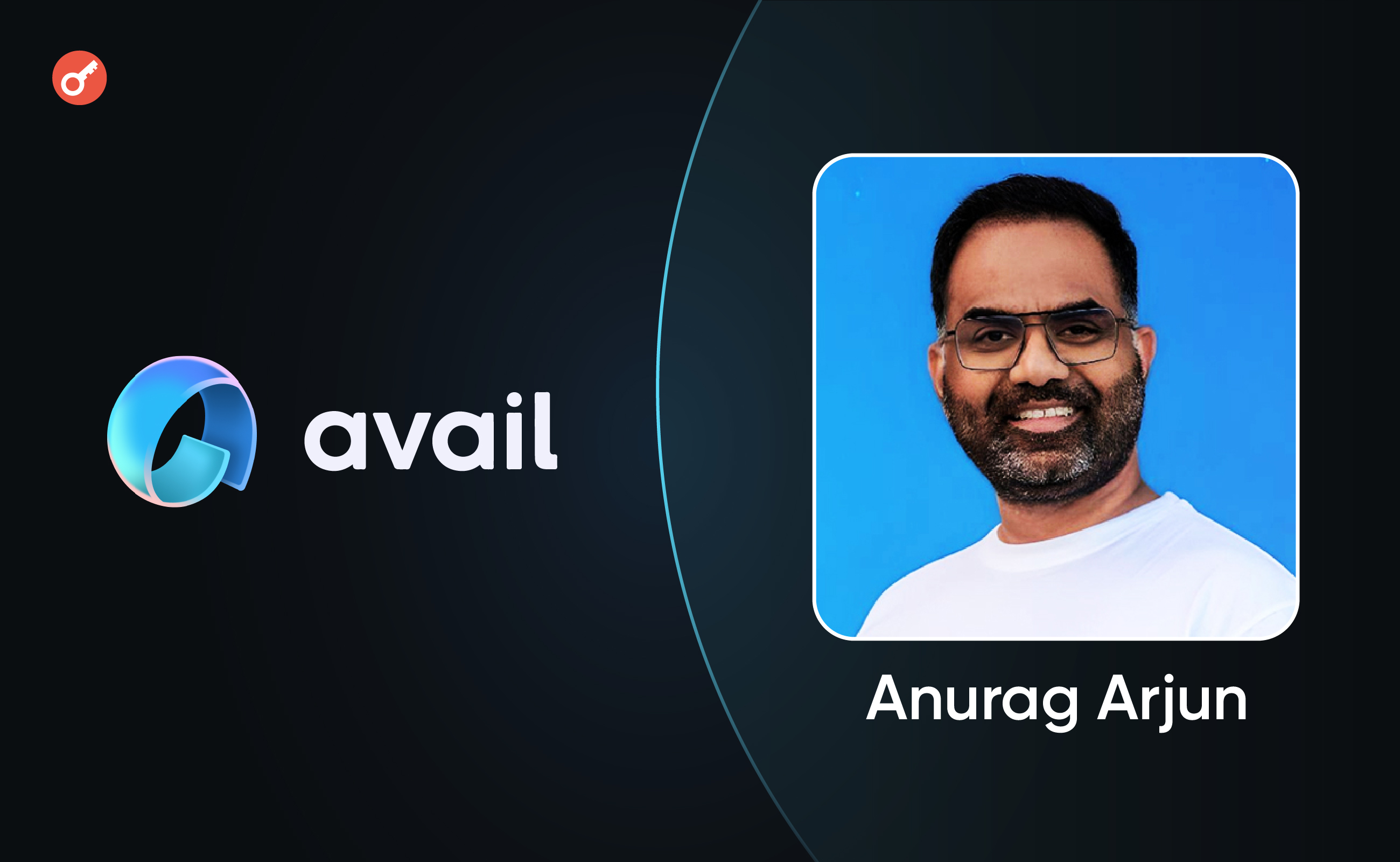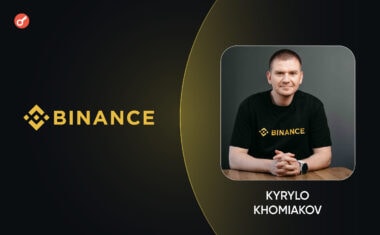The Future of Scalability: Anurag Arjun on Modular Blockchains and the Avail

Modular blockchains are one of the main narratives of the current market cycle. Projects like Celestia and Avail offer a new approach to blockchain scalability – through an architecture consisting of separate layers responsible for specific functions of a distributed network.
Incrypted spoke with Avali founder Anurag Arjun. He explained why he decided to leave Polygon Technology and start developing a modular blockchain, and where this sector of the industry is headed.
You are one of the co-founders of Polygon Technology, which you founded in 2017. How did you get involved in the cryptocurrency industry? How was the idea for Polygon born?
My journey into blockchain began with a life-changing experience with the book “Mastering Bitcoin“. I quickly realized the major scalability issues that were holding back the potential of blockchain technology.
Polygon was originally known as Matic Network. We started in a very small co-working space in Mumbai with just three people. At that time, Ethereum was facing congestion issues and the Plasma white paper had just been released.
We wanted to be one of the first teams to implement Plasma as a scaling solution for Ethereum, though we eventually pivoted to other solutions like Polygon POS.
Why did you leave Polygon Technology and start building Avail?
As Polygon progressed, it became clear that while rollups could help scale Ethereum, they still needed better data availability (DA) solutions. That’s where Avail comes in – Avail DA is a purpose-built DA solution that provides the scalability needed for rollups, L2s, and application-specific chains, and implements the same technology planned in Ethereum’s Danksharding roadmap.
We started working on Avail within Polygon, but by March 2023, we decided to spin out and establish Avail as a separate entity to maintain a structurally neutral layer that benefits all types of rollups, not just those specific to a single project.
Tell our readers about your new project – what is Avail in simple terms? How does this modular blockchain work and what problems does it solve?
Avail builds a unification layer to solve rollup fragmentation at scale. Avail DA provides a modular and scalable data availability layer based on validation and data availability sampling.
What this enables for the end user is a world of unified chains that scale. Without a scalable foundation at the base layer, any interoperability solution you build on top of it will run into scaling constraints. Avail DA addresses this from the ground up.
Avail’s Unification Layer includes, and.
Avail’s unification layer includes Avail DA for scalability, Avail Nexus for seamless cross-chain communication, and Avail Fusion for multi-asset staking and shared security. Together, these components enable Avail to synthesize modularity, chain abstraction, and shared security, creating a unified experience for the modular era of Web3.
Avail enables more scalable blockchain architectures by focusing on data availability and letting others focus on optimizing different components, such as execution environments and settlement layers. This modular approach delivers exceptional scalability improvements over monolithic blockchains.
Tell us more about each of these elements – Avail DA, Avail Nexus and Avail Fusion.
Avail DA is a modular foundation on which developers can build almost anything. It implements Data Availability Sampling (DAS) with validity proofs, which means that users have the ability to quickly verify transactions themselves on consumer-grade hardware.
Avail Nexus is a custom zero-knowledge coordination layer that acts as a verification hub. It unifies rollups across Web3 through proof aggregation and uses Avail DA as the root of trust.
Avail Fusion brings a common security model by incorporating multi-asset staking, allowing the use of cryptocurrencies such as Bitcoin and Ethereum as well as rollup tokens. This brings more token utility and also helps to unify liquidity across chains.
Since the launch of Celestia, the concept of modular blockchains has become extremely popular. Why do you think this is? Where do you see this trend going?
As the blockchain ecosystem as a whole begins to mature, we can see what is working well and what areas need improvement.
Scalability has long been a challenge for blockchains, and Ethereum’s rollup-centric roadmap is helping us move further down the path of modularity. What’s great is that there are now so many opportunities for teams to optimize every layer of the stack, resulting in more flexible and scalable blockchains.
Why are so many projects focused on DA?
Data Availability (DA) is fundamental because it ensures that data needed to recover or verify the state of the blockchain is accessible to all participants, which is critical to maintaining transparency and security.
As blockchain applications grow, the need for efficient, scalable DA solutions becomes critical. This focus on DA ensures that as the number of transactions and the complexity of operations increase, the integrity and efficiency of blockchain networks remain intact.
Let’s talk about the AVAIL token – what role does it play in the project ecosystem?
AVAIL is a key part of the Avail Unification Layer used in Avail DA, Nexus and Fusion. The token plays a foundational role in paying for network services, contributing to security via staking and participating in Avail network governance. This ensures that our network remains secure, efficient, and responsive to the needs of its users.
The distribution of tokens to participants will take place after the Avail DA launch. When will this happen?
The AVAIL token distribution is set to occur following the launch of Avail DA on our mainnet, which is anticipated soon. The exact timing is aligned with our strategic roadmap and the successful implementation of our core infrastructure. This phased distribution approach ensures that our network is robust and fully operational, providing a stable environment for token holders and users.
Avail is a relatively young startup – how difficult is it to assemble a team for a project like this? Where did you look for people?
Building a team for Avail involves finding individuals with a rare blend of skills in cryptography, software development, and systems engineering. We have focused on attracting talent from within the blockchain community and from sectors that demand similar technological expertise, such as data security and distributed systems. Our approach has been to seek out people who are not only technically proficient but who also share our vision of a unified, scalable blockchain infrastructure.
What are your plans for the future development of the project?
Avail’s vision is to serve as the unification layer for Web3 to support the scalability, flexibility, and interoperability of the blockchain ecosystem. Ultimately, our overall objective goes beyond specific projects or competition.
As we approach mainstream adoption, it’s important to work together on building strong, reliable infrastructure. It’s not only about pushing technology forward, it’s also about transforming society. By promoting teamwork and keeping the larger goal in mind, we can speed up the integration of Web3, highlighting its ability to drive humanity forward.
What do you think about the Polygon ecosystem – how will the project develop, what are its prospects?
The Polygon ecosystem continues to be a leader in scaling Ethereum for mass adoption. As Avail originated from Polygon Labs, we maintain a positive view of its ongoing role and seek to collaborate wherever possible. We anticipate that Polygon will continue to innovate and provide critical infrastructure to support new and emerging technologies.
Speaking of the cryptocurrency industry as a whole – what are your predictions for 2024? What trends can you highlight?
For 2024, we are going to see increasing consolidation around modular blockchain solutions as the industry recognizes the benefits of specialized, optimized layers. Trends toward more sustainable and energy-efficient blockchain operations will continue to gain traction as well. This will likely be accompanied by a surge in the development of rollups and application-specific blockchains, driving greater demand for unified infrastructure solutions like Avail.



